The benefits of regular physical activity occur throughout life and are essential for healthy ageing.
Adults ages 65 years and older gain substantial health benefits from regular physical activity.
When should I start?
It is never too late to start being physically active.
Being physically active makes it easier to perform activities of daily living, including eating, bathing, toileting, dressing, getting into or out of a bed or chair, and moving around the house or outside.
What are the benefits?
Help prevent falls-Physically active older adults are less likely to experience falls, and if they do fall, they are less likely to be seriously injured.
Stay independent longer- Physical activity can also preserve physical function and mobility, which may help maintain independence longer and delay the onset of major disability.
Improve physical function– Research shows that physical activity can improve physical function in adults of any age, adults with overweight or obesity, and even those who are frail.
Promoting physical activity and reducing sedentary behaviour for older adults is especially important because this population is the least physically active of any age group, and most older adults spend a significant proportion of their day being sedentary.
Older adults are a varied group. Most, but not all, have one or more chronic conditions, such as type 2 diabetes, cardiovascular disease, osteoarthritis, or cancer, and these conditions vary in type and severity.
Nevertheless, being physically active has significant benefits for ALL older adults.
Physical activity is key to preventing and managing chronic disease. Other benefits include a lower risk of dementia, better quality of life, and reduced symptoms of anxiety and depression. On top of that doing physical activity with others can provide opportunities for social engagement and interaction.
All older adults experience a loss of physical fitness and function with age, but some experience this more than others. This diversity means that some older adults can run several miles, while others struggle to walk a few blocks.
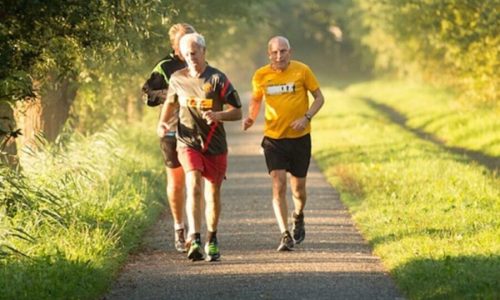
Adults should move MORE and sit LESS throughout the day.
Some physical activity is better than none. Adults who sit less and do any amount of moderate-to-vigorous physical activity gain some health benefits.
How much should I do?
– AT LEAST 150– 300 minutes a week of moderate-intensity activity
– OR 75-150 minutes a week of vigorous intensity aerobic physical activity or an equivalent combination of moderate and vigorous-intensity aerobic activity.
Preferably, aerobic activity should be spread throughout the week. Additional health benefits are gained by engaging in physical activity beyond the equivalent of 300 minutes (5 hours) of moderate-intensity physical activity a week.
What else should I do?
Muscle strengthening Exercises
Adults should also do muscle-strengthening activities of moderate or greater intensity and that involve all major muscle groups on 2 or more days a week, as these activities provide additional health benefits.
Guidelines just for older adults: As part of their weekly physical activity, older adults should do multicomponent physical activity that includes balance training as well as aerobic and muscle-strengthening activities.
Older adults should determine their level of effort for physical activity relative to their level of fitness.
Older adults with chronic conditions should understand whether and how their conditions affect their ability to do regular physical activity safely. When older adults cannot do 150 minutes of moderate-intensity aerobic activity a week because of chronic conditions, they should be as physically active as their abilities and conditions allow.
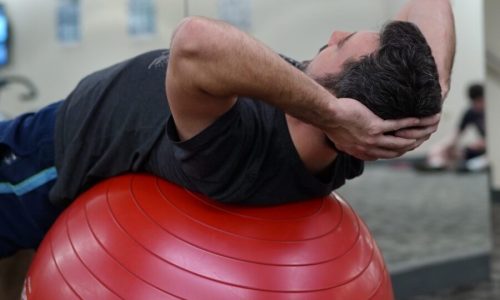
What defines Aerobic Activity?
Aerobic activities, also called endurance or cardio activities, are physical activities in which people move their large muscles in a rhythmic manner for a sustained period of time.
Such as-
Brisk walking
Jogging
Biking
Dancing
Swimming
Classes of aerobics
Aerobic activity makes a person’s heart beat more rapidly and breathing rate increase to meet the demands of the body’s movement. Over time, regular aerobic activity makes the cardiorespiratory system stronger and fitter
All types of aerobic activity count toward meeting the key guidelines. So choose to walk or bike rather than taking the car when you go out.
For health benefits, the total amount of moderate-to-vigorous physical activity is more important than the length of each physical activity episode.
In general, muscle-strengthening activities do not count toward meeting the aerobic key guidelines.
Older adults should strongly consider walking as one good way to get aerobic activity.
Walking has many health benefits, and it has a low risk of injury. It can be done all year round and is FREE and SAFE
Examples of Aerobic Activities that are also Muscle-Strengthening Activities
- Walking or hiking
- Dancing
- Swimming
- Water aerobics- great for those with people who have health issues
- Jogging or running
- Jumping- brilliant for bone strengthening
- Aerobic exercise classes
- Some forms of yoga
- Biking (stationary or outdoors) great aerobic and strengthening exercise but not so good for preventing osteoporosis
- Some garden work, such as raking and pushing a lawn mower
- Sports like tennis or basketball
- Walking as part of golf
- Strengthening exercises using exercise bands, weight machines, or hand-held weights
- Body-weight exercises (push-ups, pull-ups, planks, squats, lunges)
- Digging, lifting, and carrying as part of gardening
- Carrying groceries
- Some yoga postures
- Some forms of tai chi
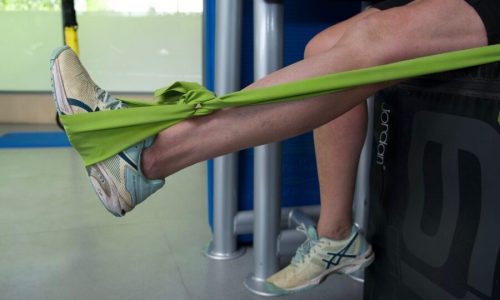
How Many Days a Week and for How Long?
Aerobic physical activity preferably should be spread throughout the week. Research studies consistently show that activity performed on at least 3 days a week produces health benefits. Spreading physical activity across at least 3 days a week may help to reduce the risk of injury and prevent excessive fatigue.
All amounts of aerobic activity count toward meeting the key guidelines if they are performed at moderate or vigorous intensity. Episodes of physical activity can be divided throughout the day or week, depending on personal preference.
How Intense?What is moderate intensity?
The intensity of aerobic activity can be described in two ways
1. Absolute intensity or
2. Relative intensity.
Most studies on older adults use relative intensity to track aerobic physical activity.
Absolute intensity is the amount of energy expended during the activity without considering a person’s cardiorespiratory fitness.
The energy expenditure of light-intensity activity, for example, is 1.6 to 2.9 x the amount of energy expended when a person is at rest.
Moderate-intensity activities expend 3.0 to 5.9 x the amount of energy expended at rest.
The energy expenditure of vigorous-intensity activities is 6.0 or more x the energy expended at rest.
Relative intensity is the level of effort required to do an activity. Less fit people generally require a higher level of effort than more fit people to do the same activity.
Relative intensity can be estimated using a scale of 0 -10.
Sitting is 0 and the highest level of effort possible is 10.
When using relative intensity, people pay attention to how physical activity affects their heart rate and breathing.
Generally a person doing moderate-intensity aerobic activity can talk but will not be able to sing while doing the activity.
A person doing vigorous-intensity activity cannot say more than a few words without pausing for a breath.
Either absolute or relative intensity can be used to monitor progress in meeting the key guidelines. However as older adults expend more energy than younger adults for the same task, such as walking, and because aerobic capacity declines with age, relative intensity is a better guide for older adults than absolute intensity.
Certain activities, such as some types of yoga or tai chi, that are considered light-intensity on an absolute scale for younger adults may be perceived as moderate or vigorous intensity for older adults. People who have been very inactive and are working to increase their physical activity levels can also use relative intensity to help determine their level of effort.
Older adults can meet the key guidelines by doing relatively moderate-intensity activity, relatively vigorous intensity activity, or a combination of both.
The relative intensity of aerobic activity is related to a person’s level of cardiorespiratory fitness. Moderate-intensity activity requires a medium level of effort. On a scale of 0 to 10, where sitting is 0 and the greatest effort possible is 10, moderate-intensity activity is a 5 or 6 and produces noticeable increases in breathing rate and heart rate.
Vigorous-intensity activity begins at a level of 7 or 8 on this scale and produces large increases in a person’s breathing and heart rate.
A general rule of thumb is that 2 minutes of moderate-intensity activity counts the same as 1 minute of vigorous-intensity activity.
For example, 30 minutes of moderate-intensity activity is roughly the same as 15 minutes of vigorous-intensity activity.
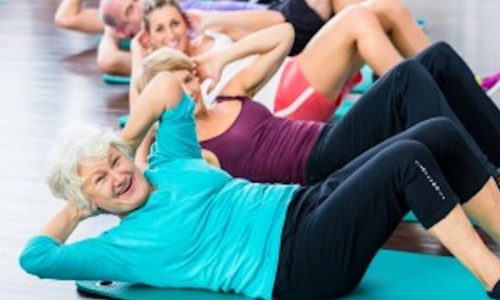
Muscle-Strengthening Activities
Resistance training is as important as aerobic exercise, eating a good diet and getting a good nights sleep for a healthy long life.
Muscle strengthening helps keep your bones strong and healthy and has an extra benefit of improving sleep quality.
Regular strength training can reduce the risks of heart attack, heart disease, stroke, type 2 diabetes and osteoporosis. A recent study found that people who did regular strength training were 41% less likely to die of cardiac problems and even had a 19% less chance of dying from cancer.
At least 2 days a week, older adults should do muscle strengthening activities that involve all the major muscle groups. These are the muscles of the legs, hips, chest, back, abdomen, shoulders, and arms.
Your program should contain a large variety of exercises covering all parts of the body.
Muscle-strengthening activities make muscles do more work than they are accustomed to during activities of daily life.
Examples of muscle-strengthening activities include lifting weights, working with resistance bands, doing calisthenics that use body weight for resistance (such as push-ups, pull-ups, and planks), climbing stairs, and carrying heavy loads (such as groceries and heavy gardening).
Muscle-strengthening activities count if they involve a moderate or greater level of intensity or effort and work the major muscle groups of the body. Whatever the reason for doing it, any muscle-strengthening activity counts toward meeting the key guidelines e.g muscle-strengthening activity done as part of a physiotherapy or rehabilitation program can count.
No specific amount of time is recommended for muscle strengthening, but muscle-strengthening exercises should be performed to the point at which it would be difficult to do another repetition.
When resistance training is used to enhance muscle strength, one set of 8 to 12 repetitions of each exercise is effective, although 2 or 3 sets may be more effective.
Development of muscle strength and endurance is progressive over time. That means that gradual increases in the amount of weight, number of sets or repetitions, or the number of days a week of exercise will result in stronger muscles.
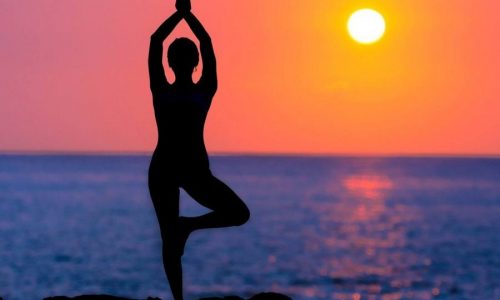
Balance Activities
These kinds of activities can improve the ability to resist forces within or outside of the body that cause falls.
Fall prevention programs that include balance training and other exercises to improve activities of daily living can also significantly reduce the risk of injury if a fall does occur.
Studies of fall prevention programs generally include about three sessions a week.
Balance training examples include walking heel-to-toe, practicing standing from a sitting position, and using a wobble board. Strengthening muscles of the back, abdomen, and legs also improves balance.
Multicomponent Physical Activity
Doing multicomponent physical activities can help reduce the risk of injury from falls and improve physical function.
Multicomponent refers to physical activity that includes more than one type of physical activity, such as aerobic, muscle strengthening, and balance training.
Multicomponent physical activity can be done at home or in a community setting as part of a structured program that includes a combination of balance, muscle-strengthening, and aerobic physical activity, and may include gait, coordination, and physical function training.
Recreational activities such as dancing, yoga, tai chi, gardening, or sports can also be considered multicomponent because they often incorporate multiple types of physical activity. It is appropriate and recommended that all older adults do multicomponent physical activities.
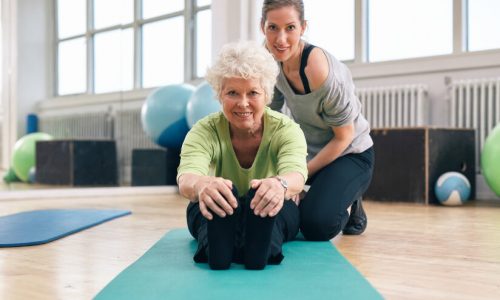
Flexibility
Older adults should maintain the flexibility necessary for regular physical activity and activities of daily life. Flexibility activities enhance the ability of a joint to move through the full range of motion.
Stretching exercises are effective in increasing flexibility, and thereby can allow people to more easily do activities that require greater flexibility. Although the health benefits of these activities alone are not known and they have not been demonstrated to reduce risk of activity-related injuries, they are an appropriate component of a physical activity program. However, time spent doing flexibility activities by themselves does not count toward meeting the aerobic or muscle-strengthening key guidelines.
Research studies of effective exercise programs typically include warm-up and cool-down activities.
Warm-Up, and Cool-Down
A warm up before moderate- or vigorous-intensity aerobic activity allows a gradual increase in heart rate and breathing at the start of the episode of activity.
A cool-down after activity allows a gradual heart rate decrease at the end of the session. Time spent doing warm-up and cool-down activities may count toward meeting the aerobic activity guidelines if the activity is at least moderate intensity (for example, walking briskly to warm up for a jog).
A warm-up for muscle-strengthening activity commonly involves doing exercises with less weight.
Inactive and Insufficiently Active Older Adults
Some physical activity is better than none!
Older adults who do not yet do the equivalent of 150 minutes of moderate-intensity physical activity a week can gain health benefits by doing small amounts of physical activity.
Try swapping sedentary behaviour such as sitting for light-intensity physical activity like light housework.
There are even more benefits to sitting less and doing moderate- or vigorous-intensity physical activity.
There is a huge difference in mortality in those taking no exercise to being active for just 60 minutes a week.
Gradually increase the amount you do gradually to avoid injury and do not worry if it takes you some weeks. e.g an inactive person could start with a walking program consisting of 5 minutes of slow walking several times each day. The length of time could then gradually be increased to 10 minutes 3 times a day increasing the walking speed .
Muscle-strengthening activities should also be gradually increased over time. Start by doing them one day a week starting at a light or moderate intensity. Build up to 2 days a week Each week increase the intensity.
Being Active in the Presence of Health Challenges
Older adults who have chronic conditions or other health challenges that prevent them from doing the equivalent of 150 to 300 minutes of moderate-intensity aerobic activity a week should set physical activity goals that meet their abilities.
They should talk with their health care professional about setting physical activity goals. They should avoid an inactive lifestyle.
Physical inactivity is among the strongest predictors of physical disability in older people.
Even small amounts of moderate-intensity aerobic activity provide some health benefits.
Frailty
In frail older adults, strong evidence demonstrates that physical function can be improved with regular physical activity. Physical activity can contribute to improved walking and gait, balance, strength and quality of life.
Multicomponent physical activity of at least moderate intensity that is performed 3 or more times a week for a duration of 30 to 45 minutes per session, over at least 3 to 5 months, appears most effective to increase functional ability in frail older adults.
Multicomponent physical activity programs are more effective than doing just a single type of physical activity.
The benefits of a 30-minute daily stroll are nearly boundless, from slowing mental decline and lowering blood pressure, to improving sleep.
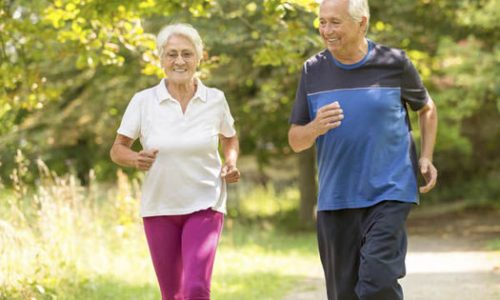
Try a Fitbit ?
Fitbit suggests everyone should try and start with a 10,000-step goal which adds up to about five miles each day for most people and should take about 30 minutes of daily exercise—satisfying the CDC’s recommendation of at least 150 mins of moderate exercise per week. If you want to lose a certain amount of weight you may need to do more, or do less if you are new to fitness or recovering from an injury.
Wear a Fitbit tracker and determine how many steps you take on average each day over the course of a week. This gives you your baseline.
The Mayo Clinic recommends adding 1000 daily steps each week, so if your baseline is 4000 steps per day, set your goal at 5000 steps each day. Meeting your goal may be as simple as an extra five-minute walk or even parking a few cars further away at the supermarket, depending on your speed and stride.
IF YOUR FITNESS GOAL IS WEIGHT LOSS
Determine how much weight you wish to lose—then do your sums.
The Academy of Nutrition and Dietetics recommends slow weight loss for lasting results—usually 1/2 – 1 lb per week. Completing an extra 10,000 steps each day typically burns about 2000 to 3500 extra calories each week. One pound of body fat equals 3500 calories, so depending on your weight and workout intensity, you could lose about one pound per week simply by completing an extra 10,000 steps each day.
HEALTH MAINTENANCE
Once you have met your desired goals, you may simply want to maintain your fitness level. The 10,000-step goal could be just right for you—and the benefits of a 30-minute daily stroll are nearly boundless, from slowing mental decline and lowering blood pressure, to improving sleep and relieving depression.

